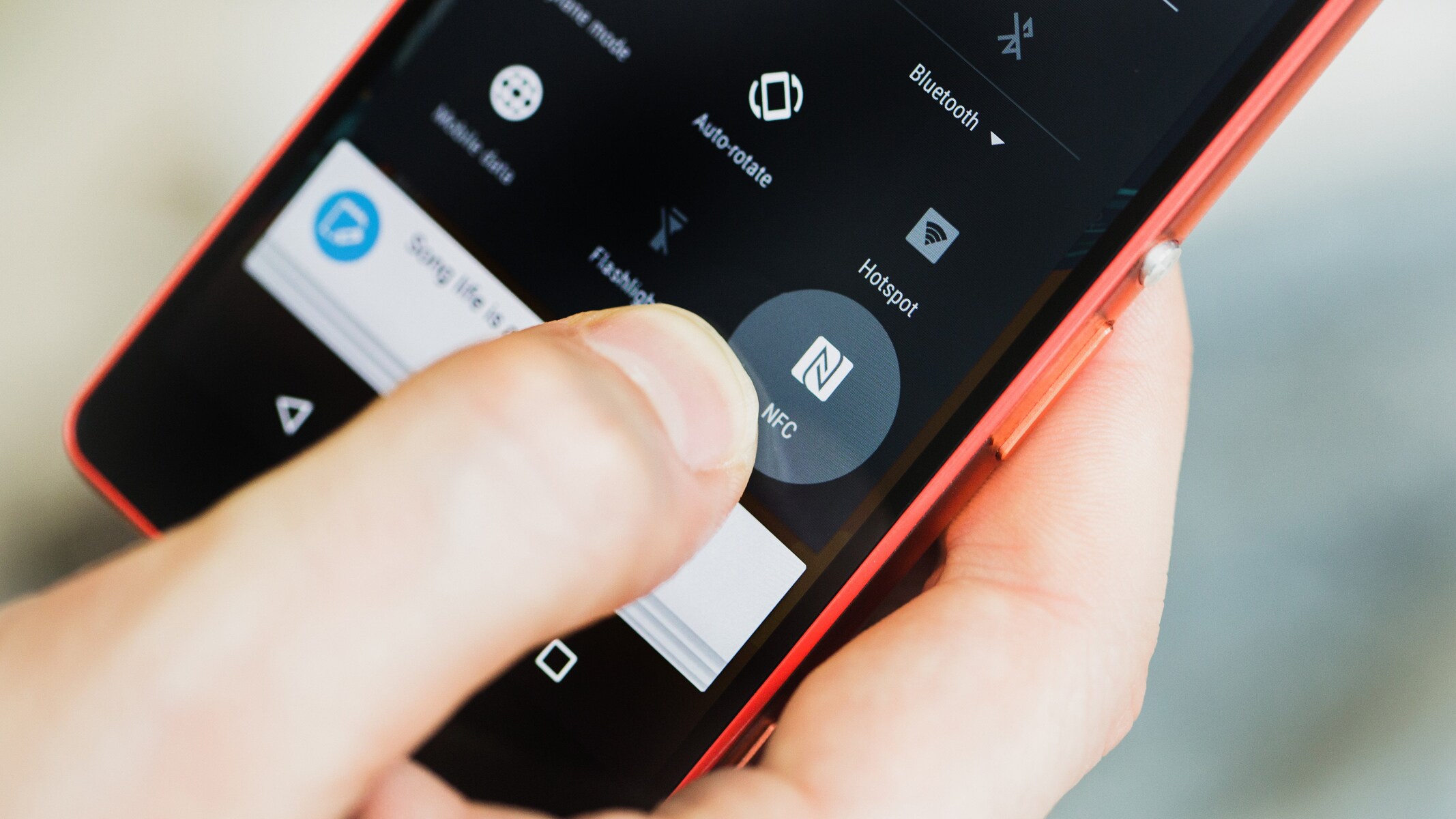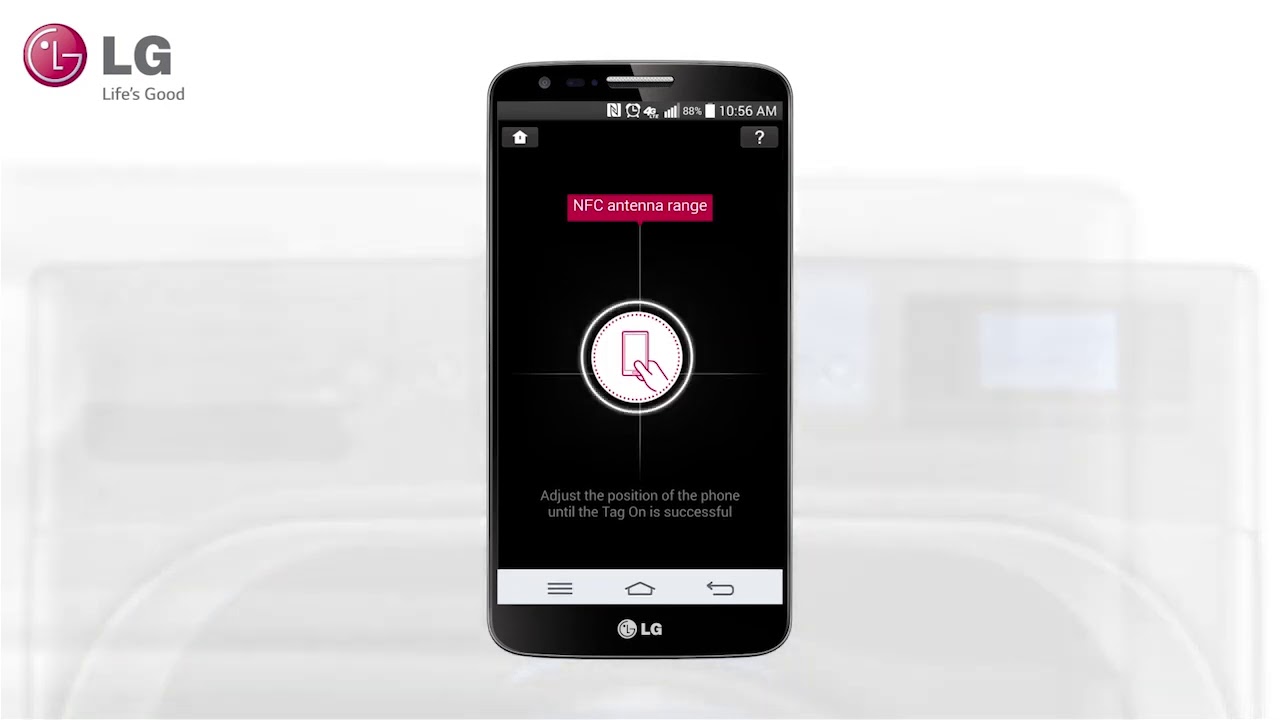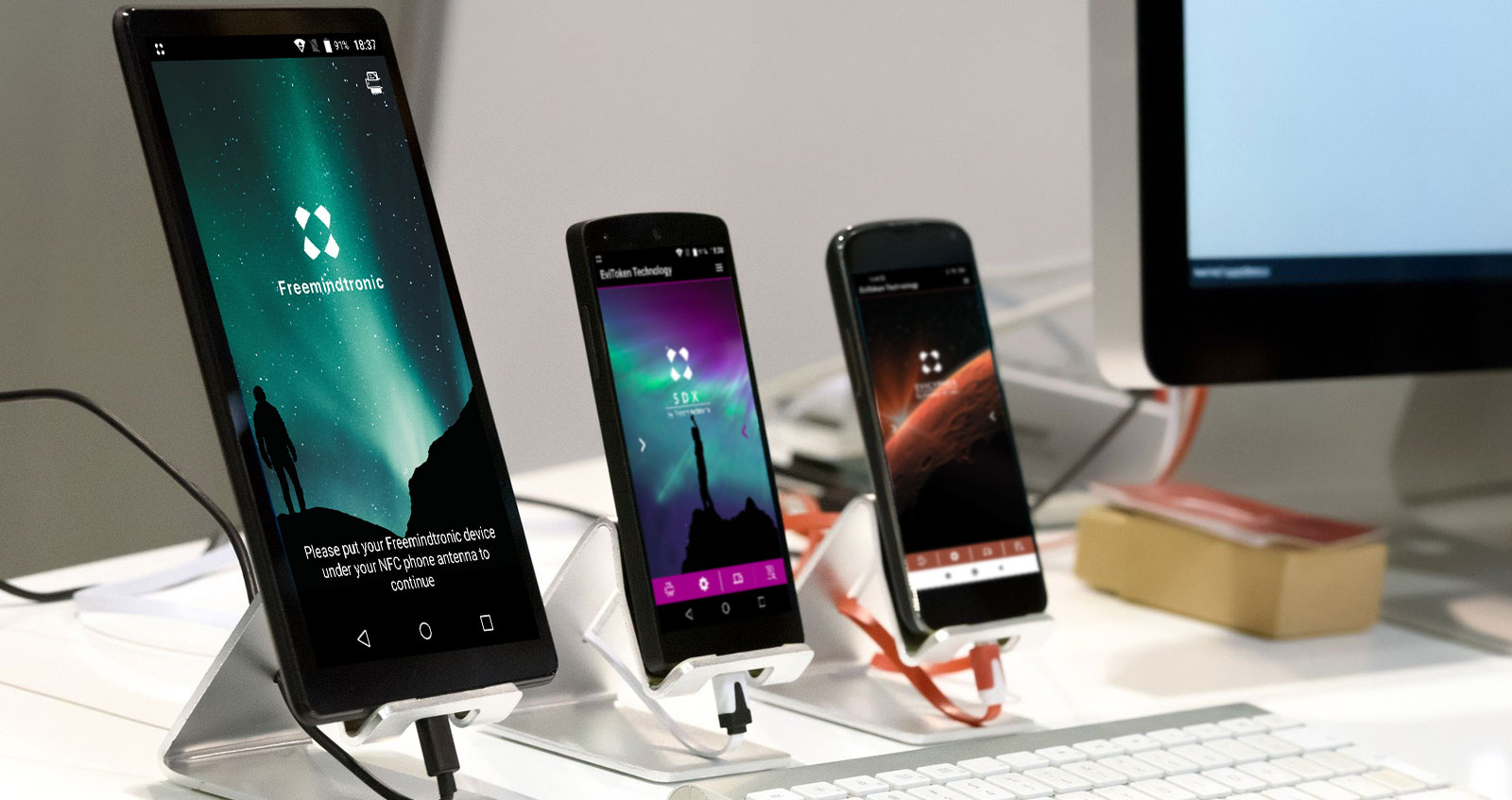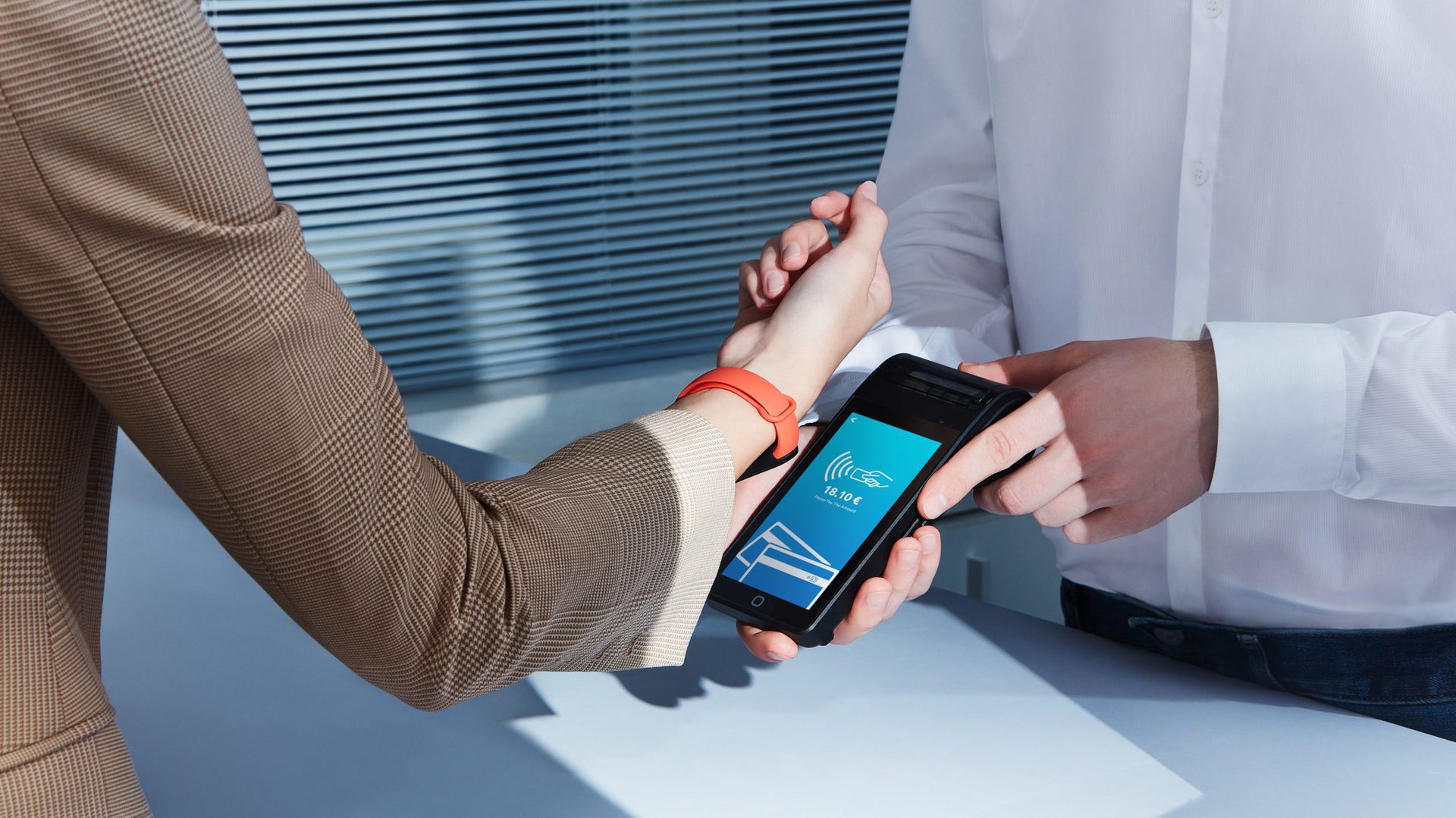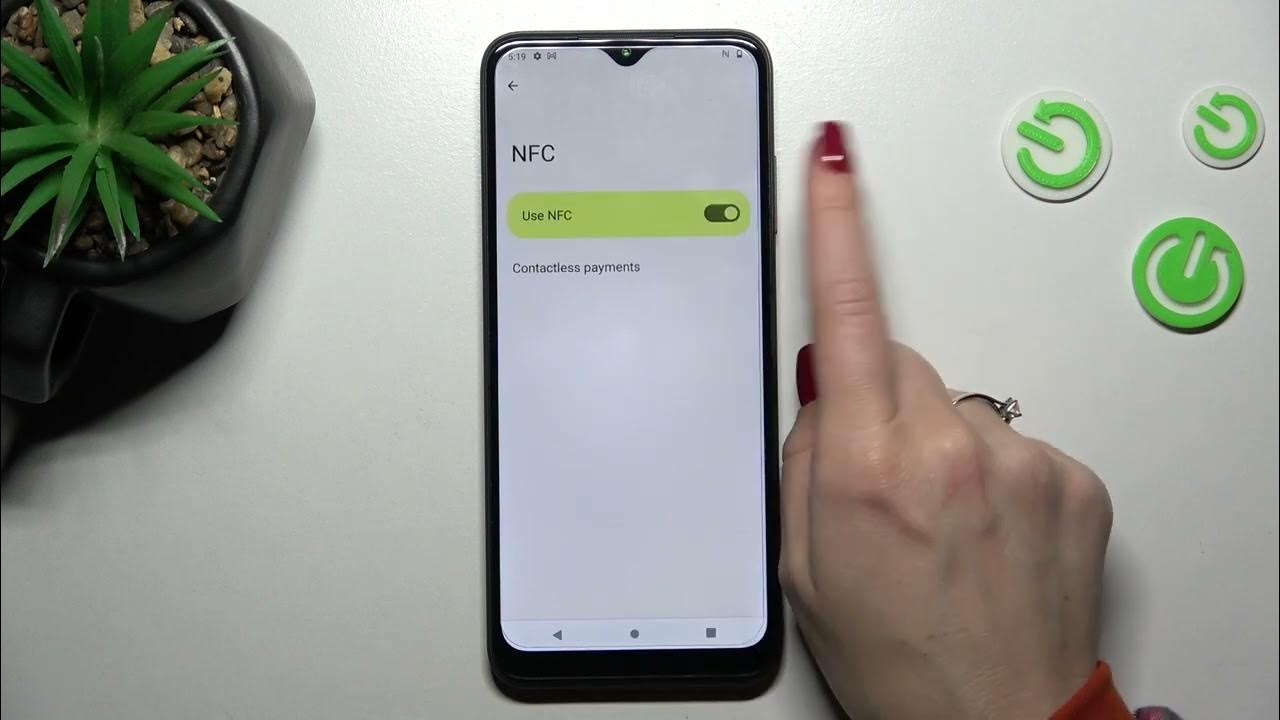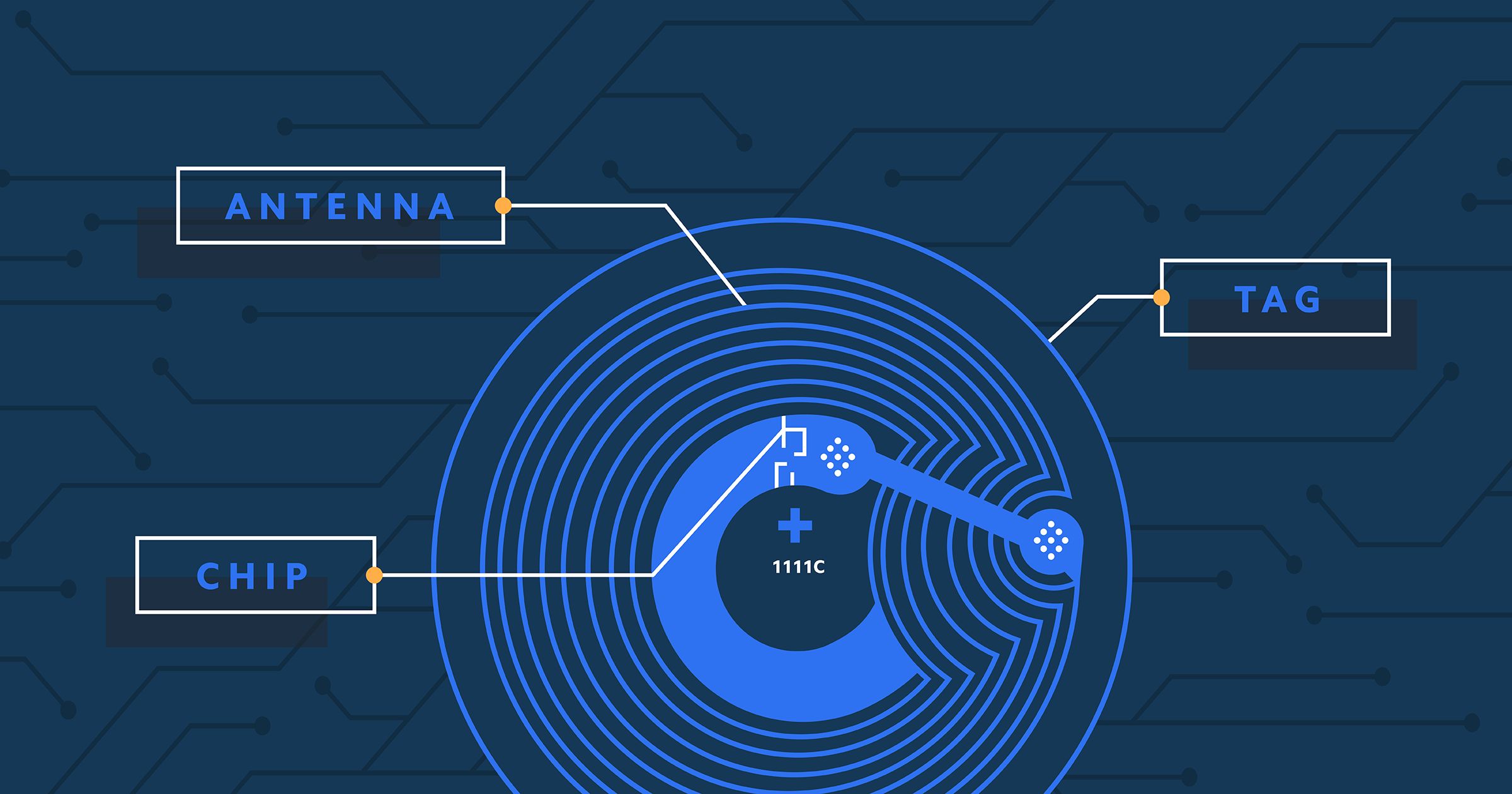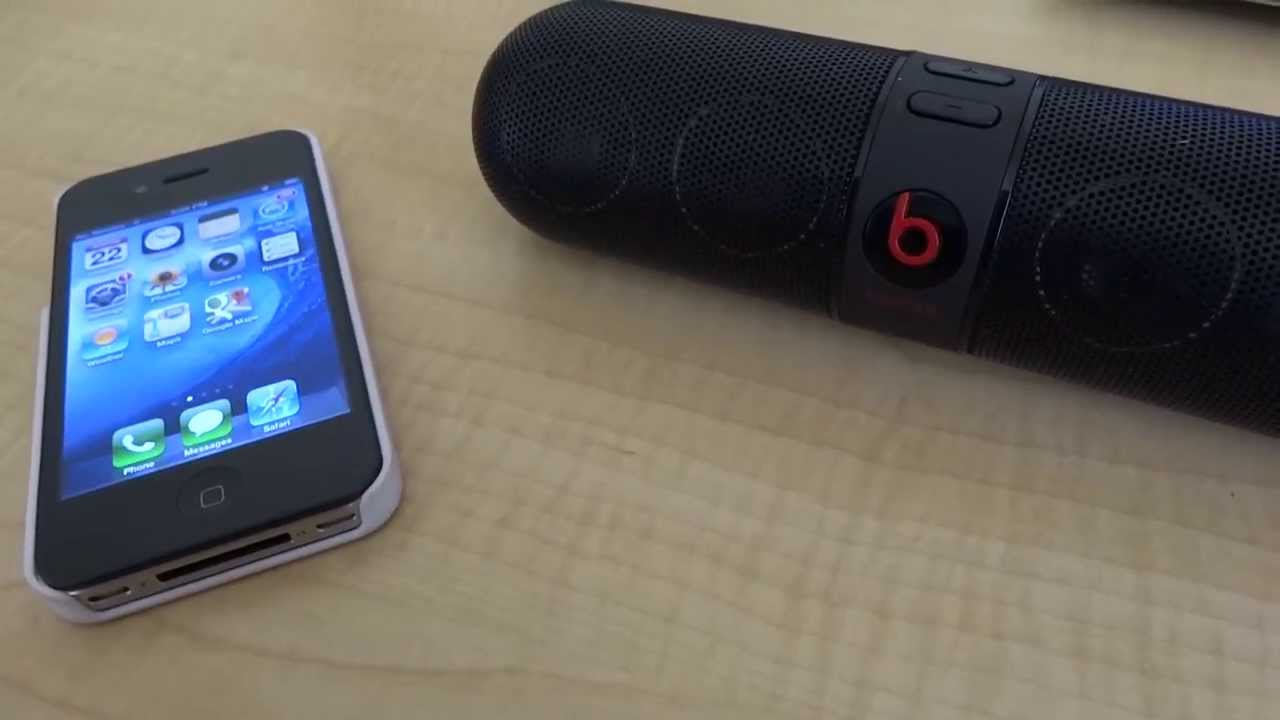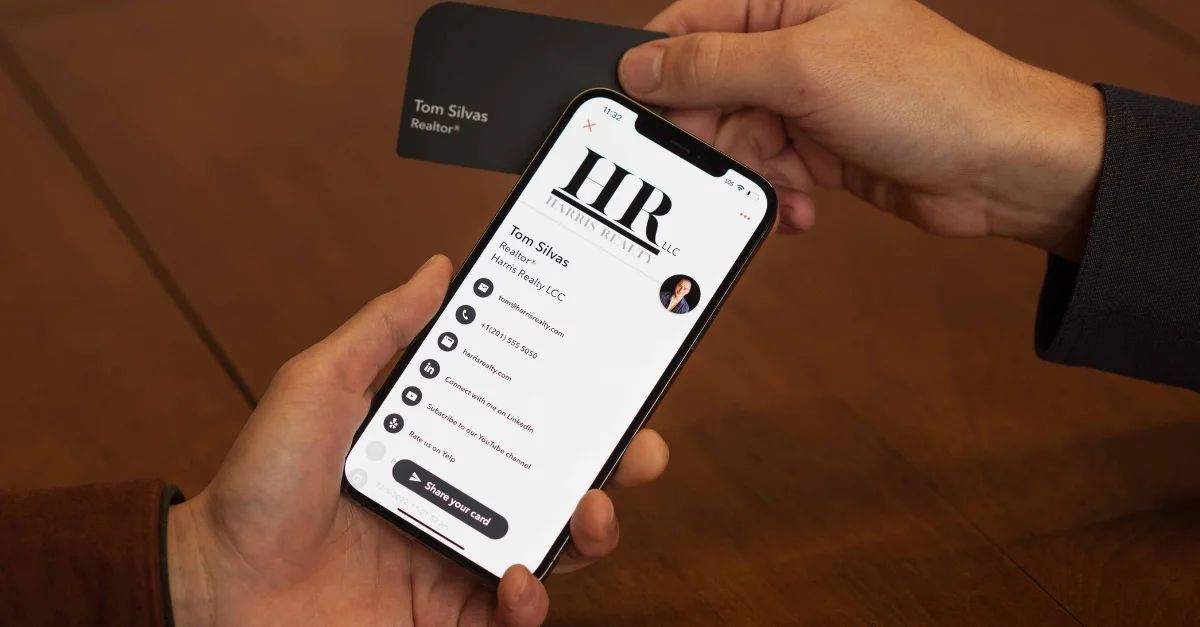What Is NFC on Smartphone?
NFC, which stands for Near Field Communication, is a short-range wireless communication technology that allows devices, such as smartphones, to establish a connection simply by bringing them close to each other. It is a feature that has become increasingly common in modern smartphones.
With NFC, your smartphone can transmit and receive data wirelessly over short distances, typically within a few centimeters. It operates on the principle of electromagnetic radio waves, enabling devices to communicate with each other by creating a temporary link between their NFC chips.
The NFC technology used in smartphones falls under the umbrella of RFID (Radio Frequency Identification), which is commonly used in contactless payment systems, access control, and identification badges. However, NFC on smartphones goes beyond these applications, offering a wide range of capabilities.
When used on a smartphone, NFC allows you to perform various tasks effortlessly. These include making contactless payments, sharing files and photos, connecting to Bluetooth devices, accessing information or services by tapping on NFC tags, and much more.
Many smartphones now come with built-in NFC functionality, and it is often found in popular brands such as Apple iPhones, Samsung Galaxy devices, and Google Pixel phones. The inclusion of NFC technology in smartphones has brought remarkable convenience, allowing users to simplify their daily activities and enjoy seamless interactions.
By harnessing the power of NFC, your smartphone becomes a versatile tool that can initiate connections and transactions with a single touch. Whether you want to pay for your morning coffee with a quick tap, instantly transfer files to a friend’s phone, or effortlessly connect to wireless speakers, NFC on your smartphone makes it all possible.
As this technology continues to evolve, NFC-enabled smartphones are becoming increasingly prevalent, making it easier than ever to enjoy the benefits of this convenient and quick communication method.
Introduction
In today’s modern world, smartphones have become an essential part of our daily lives. They serve as our communication devices, personal assistants, entertainment centers, and much more. With the rapid advancement of technology, smartphones are now equipped with various features and functionalities to enhance our user experience. One such feature is NFC, which stands for Near Field Communication.
NFC is a wireless communication technology that allows devices to establish a connection by simply bringing them close to each other. It is a short-range communication method that operates on the principle of electromagnetic radio waves. NFC technology has been integrated into many smartphones, enabling users to perform a range of tasks with just a simple tap or touch.
With NFC on your smartphone, you can enjoy the convenience of making contactless payments, sharing files and photos, connecting to compatible devices, accessing services through NFC tags, and more. It eliminates the need for wires or physical contact, making data transfer and communication seamless and effortless.
Moreover, NFC-enabled smartphones come with various security features to protect your sensitive information. With built-in encryption and authentication protocols, you can use NFC confidently, knowing that your transactions and interactions are secure.
In this article, we will explore the world of NFC on smartphones. We will delve deeper into what NFC is, how it works, the benefits of having NFC on your smartphone, common uses of NFC, setting up and using NFC on your device, and security considerations when using NFC. By the end of this article, you will have a thorough understanding of NFC on smartphones and how it can enhance your daily life.
So, let’s embark on this journey into the world of NFC on smartphones and discover the possibilities and conveniences it brings along.
What is NFC?
NFC, or Near Field Communication, is a wireless communication technology that allows devices to establish a connection by simply bringing them close to each other. It operates on the principle of electromagnetic radio waves and is designed for short-range communication, usually within a few centimeters.
NFC technology is based on the same fundamental principles as RFID (Radio Frequency Identification), which is commonly used in contactless payment systems, inventory tracking, and electronic access control. However, NFC offers additional capabilities and is specifically designed for peer-to-peer communication between devices.
Unlike other wireless communication technologies like Bluetooth or Wi-Fi, NFC requires devices to be in close proximity for a connection to be established. This proximity requirement adds an extra layer of security, making NFC suitable for various applications where secure interactions are essential.
One of the key advantages of NFC is its simplicity and ease of use. With NFC, devices can initiate communication simply by being brought close to each other, eliminating the need for manual pairing or complex setup procedures. This makes NFC ideal for quick and convenient interactions in everyday scenarios.
NFC operates at different frequencies depending on the region and the application. The most common frequencies used in NFC are 13.56 MHz, which allows for communication at a range of a few centimeters. These frequencies ensure that NFC remains a short-range technology, reducing the risk of unauthorized access or interference.
Furthermore, NFC can operate in three different modes: reader/writer mode, peer-to-peer mode, and card emulation mode. In reader/writer mode, NFC-enabled devices can read or write data on NFC tags or other compatible devices. In peer-to-peer mode, two NFC-enabled devices can exchange information and perform interactive tasks. In card emulation mode, NFC-enabled devices can emulate smart cards, allowing them to be used for contactless payments or access control.
Overall, NFC is a versatile technology that offers a wide range of applications and benefits. From contactless payments to file sharing and device connectivity, NFC simplifies our interactions with the digital world, making tasks faster and more convenient.
In the next sections, we will explore in more detail how NFC works, the benefits of having NFC on your smartphone, common uses of NFC, and how to set up and use NFC on your device.
How does NFC work?
Near Field Communication (NFC) technology operates on the principle of electromagnetic radio waves to facilitate communication between devices in close proximity. NFC-enabled devices, such as smartphones, contain an NFC chip that allows them to transmit and receive data wirelessly.
NFC works by creating a temporary link between two devices through electromagnetic field induction. When two NFC devices are brought close to each other, the electromagnetic fields generated by their respective NFC chips interact and establish a communication channel.
The communication between NFC devices occurs in a process called “handshaking,” which involves the exchange of data packets. This exchange allows the devices to identify each other, negotiate communication parameters, and transmit information back and forth.
NFC supports two modes of communication: passive and active. In passive mode, one device acts as an initiator (usually the smartphone) and generates an electromagnetic field. The other device, known as the target (e.g., an NFC tag), responds by modulating this field with its own information. This mode is commonly used for activities such as reading information from NFC tags and contactless payments.
In active mode, both devices generate their own electromagnetic fields, allowing them to exchange data bidirectionally. This mode is used for tasks that require two-way communication, like file transfers between NFC-enabled smartphones or pairing with Bluetooth devices.
When it comes to data transfer, NFC operates at relatively low speeds compared to other wireless technologies, such as Wi-Fi or Bluetooth. This is because NFC is primarily designed for short-range communication over distances of a few centimeters. However, this limitation is compensated by the ease and convenience of establishing a connection with a simple touch or tap.
NFC technology supports a variety of data formats, including text, URLs, contact information, and even encoded commands. For example, by tapping an NFC-enabled smartphone to an NFC tag embedded in a poster, users can instantly access website links, promotional offers, or multimedia content.
In addition to peer-to-peer communication, NFC can also be used for contactless payments. By securely storing payment information on a smartphone and utilizing secure protocols, NFC technology allows users to make quick and convenient transactions with a simple tap of their device on a contactless payment terminal.
Overall, NFC technology simplifies data exchange and communication between devices in close proximity. Its ease of use and security features make it a valuable tool for a wide range of applications, from mobile payments and file sharing to accessing services and automating tasks.
In the next section, we will explore the benefits of having NFC on your smartphone and how it can enhance your user experience.
Benefits of having NFC on your smartphone
Near Field Communication (NFC) technology has become a standard feature in many smartphones. Its integration offers a multitude of benefits that enhance the user experience and streamline various tasks. Let’s explore some of the key advantages of having NFC on your smartphone:
1. Contactless Payments:
One of the most prominent benefits of NFC is the ability to make quick and secure contactless payments using your smartphone. By storing your payment information securely, you can conveniently tap your device on a compatible payment terminal to complete transactions without the need for physical cards or cash.
2. Easy File and Data Sharing:
NFC simplifies the process of sharing files, photos, and other data between smartphones. With a simple tap, you can instantly transfer content to another NFC-enabled device, saving you time and eliminating the need for cables or complicated pairing processes.
3. Seamless Device Connectivity:
NFC makes it effortless to connect your smartphone to other compatible devices, such as Bluetooth speakers or headphones. By simply tapping your phone to the device, the NFC connection initiates a quick and straightforward pairing process, allowing you to enjoy your favorite music or audio without hassle.
4. Access Services and Information:
NFC tags can be embedded in physical objects, posters, or advertisements to provide convenient access to services or information. By tapping your NFC-enabled smartphone to these tags, you can instantly access websites, receive promotional offers, or join a Wi-Fi network without the need to manually enter information.
5. Enhanced Home Automation:
NFC technology can be utilized to automate various tasks in your home. By using NFC tags, you can create “smart” scenarios, such as tapping your phone to a tag to activate your preferred lighting settings, adjust the thermostat, or even set your alarm system. This seamless integration adds a level of convenience and control to your daily routines.
6. Efficient Public Transport Usage:
NFC technology is often integrated into public transport systems, allowing users to conveniently pay for fares by tapping their smartphones on ticket readers. This eliminates the need for physical tickets or travel cards, making your daily commute smoother and more convenient.
7. Simplified Access Control:
NFC enables secure access control to buildings or restricted areas. By utilizing NFC-enabled identification cards or smartphones, users can simply tap their devices on NFC readers to gain entry. This eliminates the need for physical keys or ID cards, enhancing convenience and security.
These are just a few examples of the benefits that NFC technology brings to your smartphone. As the technology continues to evolve, we can expect more innovative applications and features that further enhance the user experience.
In the next section, we will explore some common uses of NFC and how they can be incorporated into your daily life.
Common Uses of NFC
Near Field Communication (NFC) technology offers a wide range of applications that simplify and enhance various tasks in our daily lives. Let’s explore some of the common uses of NFC on smartphones:
1. Contactless Payment:
Contactless payment is one of the most ubiquitous uses of NFC technology. With NFC-enabled smartphones, users can make secure transactions by simply tapping their devices on payment terminals. This convenient method has gained widespread popularity, allowing users to leave their wallets at home and make swift, hassle-free payments.
2. File and Data Transfer:
NFC enables quick and effortless file and data sharing between smartphones. Whether it’s sharing a photo, a contact, or a document, you can simply tap your NFC-enabled phone to another NFC-enabled device to initiate the transfer. This eliminates the need for cables or complicated setup processes, making content sharing faster and easier.
3. Pairing with Bluetooth Devices:
NFC simplifies the process of pairing your smartphone with Bluetooth devices. By tapping your NFC-enabled phone to a compatible device, such as wireless headphones or speakers, the NFC connection automatically initiates the pairing process. This seamless integration saves time and allows you to enjoy your media without any hassle.
4. Accessing Services and Information:
NFC tags are commonly used to provide quick access to services or information. For instance, in marketing campaigns, NFC tags can be embedded in posters or advertisements. By tapping your smartphone on the tag, you can instantly access websites, promotional offers, or additional information related to the content.
5. Public Transport Ticketing:
In many cities, NFC technology has been integrated into public transportation systems. Users can tap their smartphones on NFC readers to pay for fares or validate their tickets, eliminating the need for physical tickets or travel cards. This convenient feature streamlines the process of using public transport and reduces the risk of lost or forgotten tickets.
6. Loyalty and Membership Cards:
NFC-enabled smartphones can store loyalty cards and membership cards, replacing the need to carry physical cards. By simply tapping your phone on a reader at the point of sale, you can access discounts, earn rewards, and enjoy the benefits of various loyalty programs, making it more convenient to manage your memberships.
7. Home Automation:
NFC can be utilized in home automation systems to trigger specific actions or scenarios. By placing NFC tags strategically around your home, you can tap your smartphone to activate functions like adjusting the lighting, controlling the temperature, or even starting your favorite playlist. This integration provides a seamless and personalized experience within your living space.
These are just a few examples of the common uses of NFC on smartphones. The versatility of NFC technology allows for endless possibilities, and as it continues to evolve, we can expect to see even more innovative applications integrating NFC in various aspects of our lives.
In the next section, we will explore how to set up and use NFC on your smartphone.
Setting up and using NFC on your smartphone
Setting up and using Near Field Communication (NFC) on your smartphone is a straightforward process. Here are the steps to get started:
1. Check NFC Compatibility:
First, ensure that your smartphone has NFC capabilities. Most modern smartphones, including popular brands like Apple iPhones, Samsung Galaxy devices, and Google Pixel phones, come with built-in NFC functionality.
2. Enable NFC:
Go to your smartphone’s settings and look for the NFC option. It is usually located under the “Connections” or “Wireless & Networks” section. Toggle the switch to enable NFC on your device.
3. Set Default Payment App (if applicable):
If you plan to use NFC for contactless payments, ensure that you have a compatible mobile payment app installed on your phone. Set the desired app as the default payment app in your smartphone’s settings, if necessary.
4. Familiarize Yourself with NFC Tags:
Get to know NFC tags, which are small adhesive stickers or keychain-like devices that can store data and can be read by NFC-enabled smartphones. NFC tags can be purchased online or at electronics stores. They often come pre-programmed or can be programmed with specific actions or information using dedicated NFC tag writer apps.
5. Perform Common NFC Actions:
Once NFC is enabled on your smartphone, you can start using it for various tasks. Here are a few examples of common NFC actions:
– Paying with NFC: Tap your NFC-enabled smartphone on a contactless payment terminal to initiate a payment transaction using a compatible mobile payment app.
– Sharing Files: Bring two NFC-enabled smartphones close to each other and tap to start the file or data transfer process.
– Accessing Information: Tap your smartphone on an NFC tag embedded in a poster or advertisement to access websites, receive discounts, or retrieve additional information.
– Pairing with Bluetooth Devices: Tap your smartphone on an NFC-enabled Bluetooth device to quickly establish a connection.
– Automating Tasks: Program NFC tags to trigger specific actions, such as adjusting home automation settings, launching specific apps, or initiating actions on your smartphone with a simple tap.
6. Be Mindful of Security:
While NFC provides convenience, it is important to be mindful of security considerations. Ensure that you enable lock screen security (PIN, password, or biometrics) to protect your smartphone and prevent unauthorized access. Be cautious when tapping unknown NFC tags, as they may attempt to execute malicious actions.
By following these steps and familiarizing yourself with NFC functionality on your smartphone, you can unlock the full potential of this versatile technology. Experiment with different NFC actions and discover how it can simplify and enhance your daily interactions.
In the next section, we will explore the security considerations associated with NFC usage.
Security Considerations with NFC
While Near Field Communication (NFC) technology offers numerous conveniences, it is important to be aware of the security considerations associated with its usage. By understanding these considerations, you can ensure a safe and secure NFC experience on your smartphone. Here are some key security considerations to keep in mind:
1. Enable Lock Screen Security:
It is crucial to enable lock screen security on your smartphone. Whether it’s a PIN, password, or biometric authentication, activating lock screen security adds an extra layer of protection in case your phone falls into the wrong hands. This prevents unauthorized access to your NFC-enabled features and data.
2. Be Mindful of Unknown NFC Tags:
Exercise caution when encountering unknown NFC tags. While NFC is generally safe, malicious individuals may attempt to exploit NFC technology by creating fake or compromised tags. Avoid tapping unknown tags that you come across, especially if they appear suspicious or are in unexpected locations.
3. Secure NFC Payment Apps:
If you use NFC for contactless payments, ensure that the mobile payment app you choose is from a reputable source and has robust security measures in place. Stick to official app stores for downloading payment apps and keep them updated to avoid potential vulnerabilities that could be exploited by attackers.
4. Protect Sensitive Information:
Exercise caution when using NFC for sharing sensitive information, such as banking details or personal identification. Be mindful of the applications and services you interact with and ensure that they have proper security measures in place, such as encryption and secure authentication protocols.
5. Verify NFC Devices and Readers:
When using NFC for transactions or interactions, verify the legitimacy and security of the devices or readers involved. Ensure that the device or reader is from a trusted source, especially when making contactless payments or accessing sensitive information. Unauthorized or tampered devices may attempt to collect your personal data or compromise your security.
6. Use Secure Network Connections:
When using NFC to transfer data or access online services, ensure that you are connected to secure network environments. Avoid using NFC in public Wi-Fi networks or other unsecured connections that could expose your data to potential attackers. Use trusted networks, such as your home Wi-Fi or cellular data, whenever possible.
By following these security considerations, you can enjoy the benefits of NFC technology while reducing the risk of potential vulnerabilities and unauthorized access. Stay informed about the latest security practices and ensure that your smartphone’s software and applications are up to date to benefit from the latest security enhancements.
In the next section, we will summarize the key points discussed in this article, concluding our exploration of NFC on smartphones.
Conclusion
Near Field Communication (NFC) technology has revolutionized the way we interact with our smartphones, offering convenience and ease of use in various aspects of our daily lives. With NFC-enabled smartphones, we can make contactless payments, share files and data, connect to Bluetooth devices, access information through NFC tags, and automate tasks with a simple tap or touch.
In this article, we explored what NFC is and how it works. We discussed the benefits of having NFC on your smartphone, including the ability to make contactless payments, simplify file sharing, enhance device connectivity, access services and information, and streamline public transport usage. Additionally, we provided guidance on how to set up and use NFC on your smartphone, emphasizing the importance of security considerations to protect your personal information.
While NFC brings numerous advantages, it’s crucial to exercise caution and stay vigilant about potential security risks. Enabling lock screen security, being mindful of unknown NFC tags, securing NFC payment apps, protecting sensitive information, verifying NFC devices and readers, and using secure network connections are essential practices to ensure a safe NFC experience.
As technology continues to advance, NFC on smartphones will likely offer even more innovative applications and features. By staying informed and embracing the possibilities of NFC, we can make the most of this versatile technology and simplify our interactions in an increasingly connected world.
So, go ahead, explore NFC on your smartphone, and discover the conveniences and efficiencies it brings. Tap, connect, and experience the seamless power of NFC.







